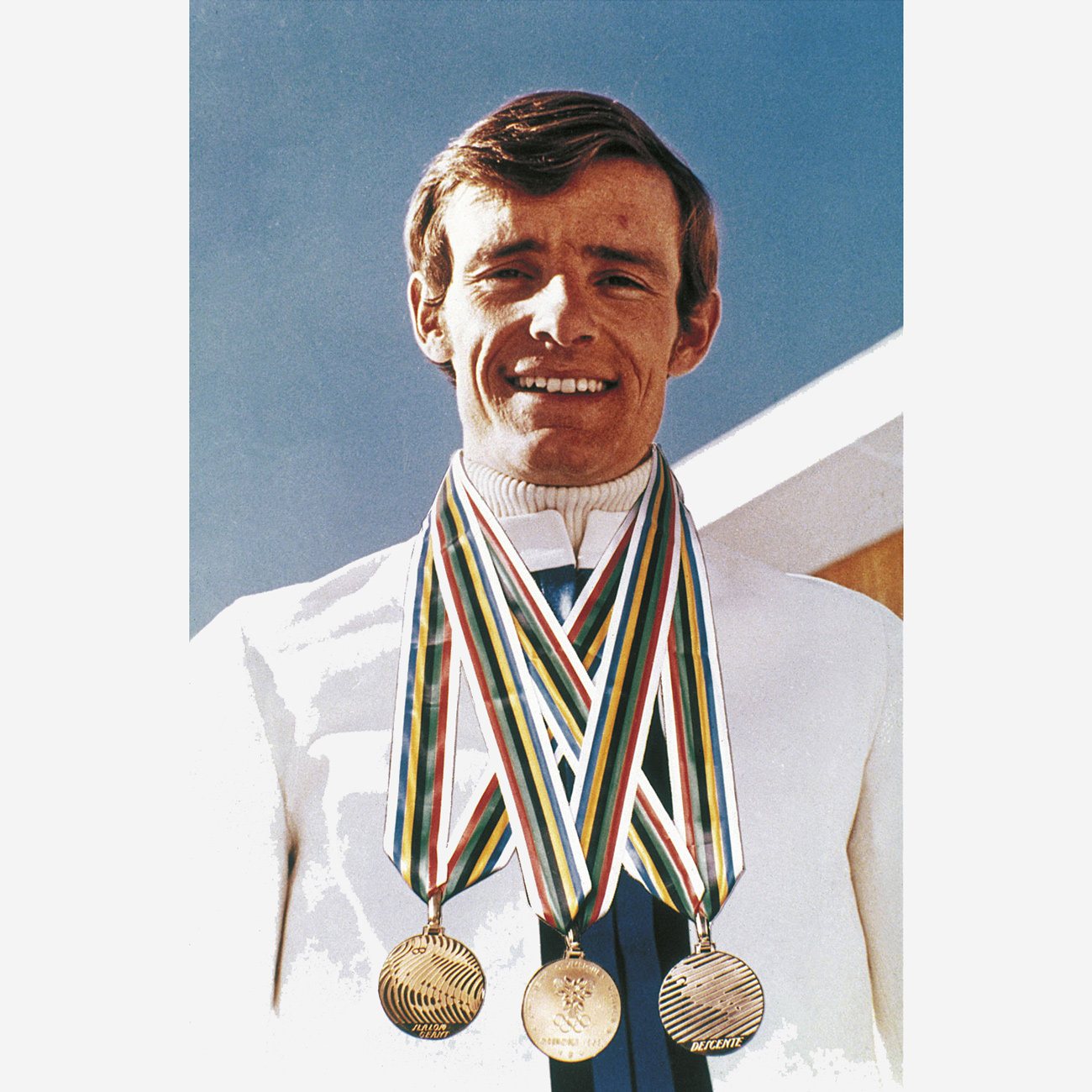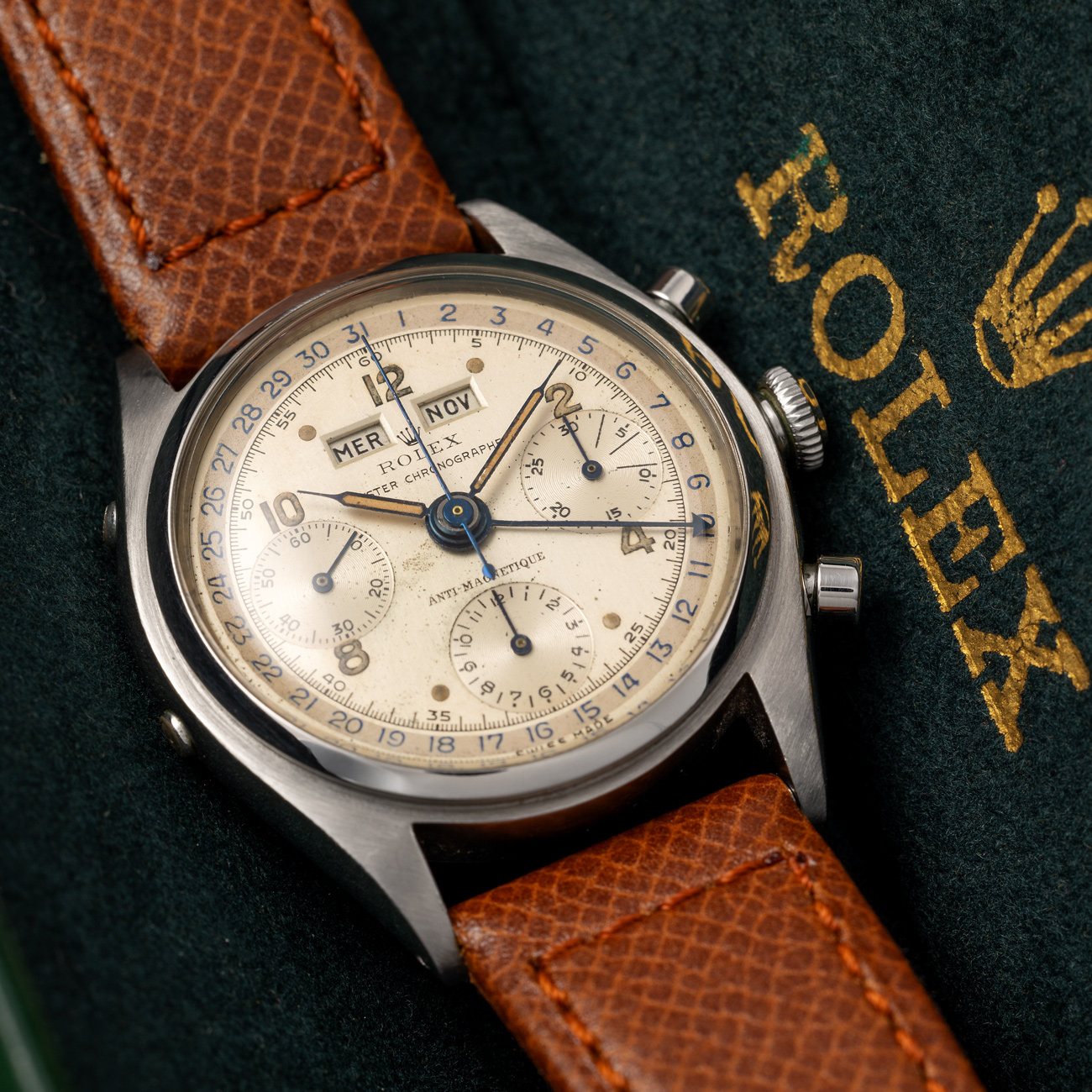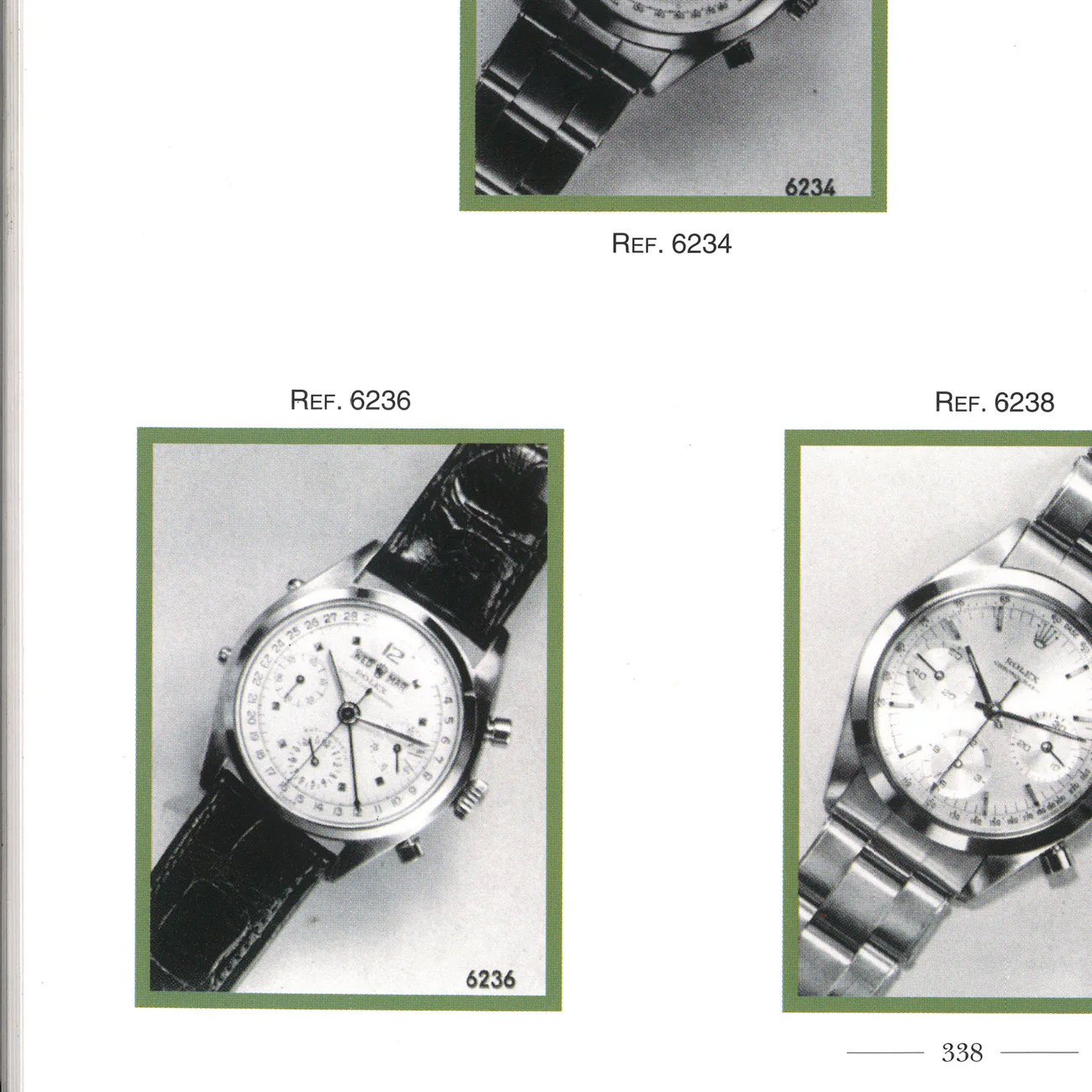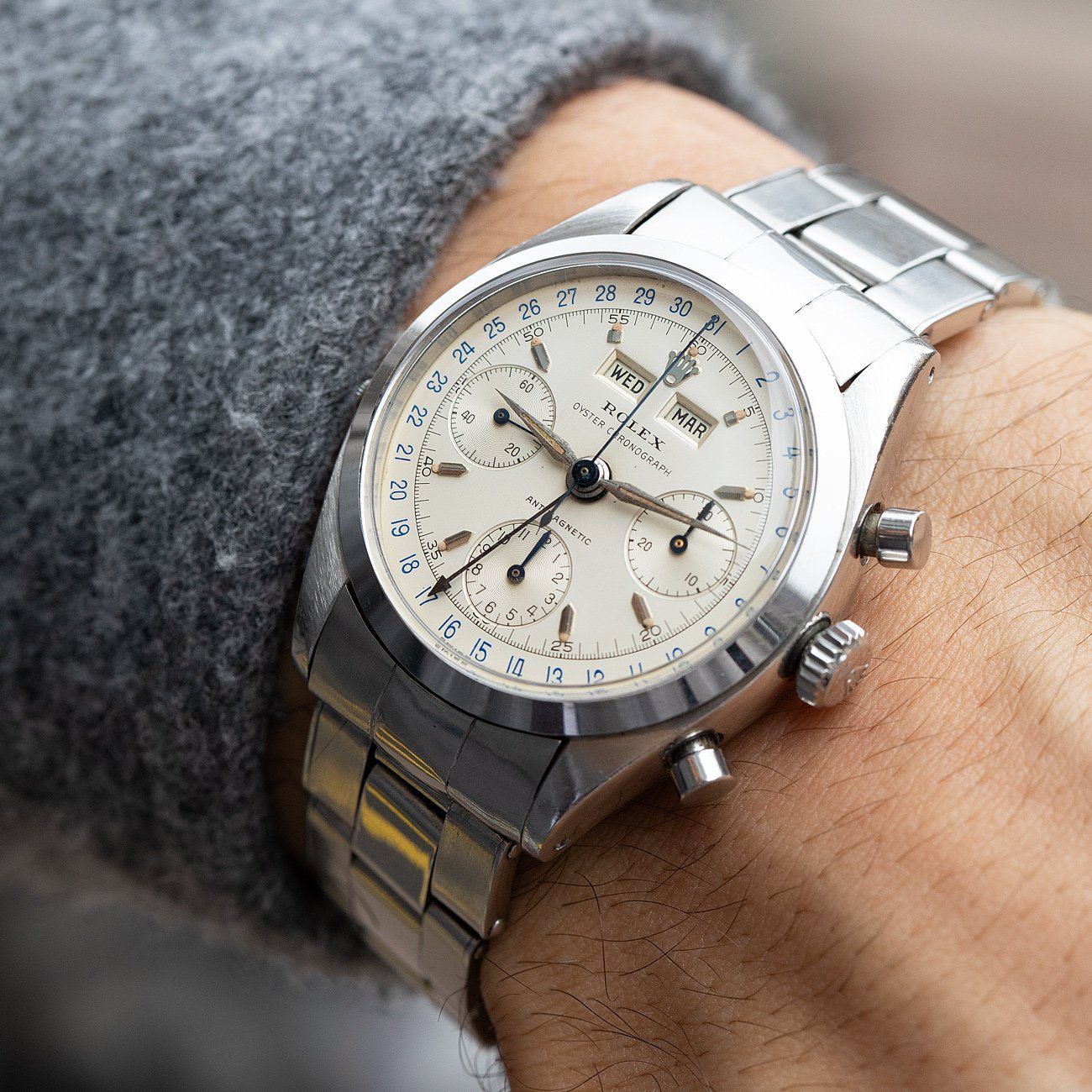In the world of vintage Rolex, few watches embody technical sophistication, rarity, and collector appeal quite like the Dato-Compax, more affectionately known by collectors as the "Jean-Claude Killy." Monaco Legend Group is proud to offer not one, but two exceptional examples of this legendary chronograph in our upcoming Exclusive Timepieces sale, taking place in Monaco on 26th and 27th April 2025.
The two references bookend the production history of the Dato-Compax family. The 4767, the very first of the Oyster-cased Dato-Compax models, and the 6236, the final iteration before Rolex would adopt a more utilitarian approach to chronographs with the mighty Daytona.
A Rolex complication unlike any other
Produced from 1947 through to the early 1960s, the Dato-Compax was one Rolex’s few complications, integrating a triple calendar and chronograph into a wristwatch. It was a remarkable technical achievement for a brand better known at the time for robust tool watches such as the Explorer, Submariner, and GMT-Master.
Across four references, 4767, 5036, 6036, and 6236, Rolex offered a rare alternative to the tool-watch aesthetic. It was a model marketed to the sophisticated world traveller, businessman, or sportsman, combining both functionality and refined style in the brand’s iconic Oyster case. All were powered by variations of the manual-winding Valjoux 72C movement and are today among the rarest and most coveted vintage Rolex references in existence.
Their nickname, “Jean-Claude Killy”, comes from the celebrated Olympic skiing champion and longtime Rolex ambassador who famously wore a reference 6236.

Reference 4767 - The first of its kind

Launched in 1947, the Rolex Dato-Compax reference 4767 was the first calendar chronograph to feature the brand’s Oyster case. It marked a significant turning point in Rolex’s evolution, combining water resistance with mechanical complexity.
Lot 37 in our April sale represents one of the finest surviving examples. Housed in a 37 mm stainless steel case with sharp lines and original proportions, the watch is believed to be one of only around 30 known examples in steel, out of a total production of approximately 400. Its two-tone silvered dial features luminous Arabic numerals and an outer date track, paired with an exceptionally rare luminous handset. The balance of aesthetics and legibility in this early execution is extraordinary.

This exact watch last appeared publicly at Christie’s Geneva in 2013, where it sold for CHF 387,750, a testament to its importance and desirability. Its reappearance today represents a rare second chance for collectors to acquire one of the most significant early Rolex complications ever made.
Reference 6236 - The final flourish

If the 4767 represents the beginning, the Rolex Dato-Compax reference 6236 is the triumphant final act. Produced in the late 1950s and early 1960s, the 6236 refines everything Rolex had learned about combining beauty and function into one final reference before retiring the Dato-Compax line.

Lot 242, in a 36mm stainless steel case and paired with an expanding Rolex Oyster bracelet, is a masterclass in mid-century design. Its clean silvered dial features faceted hour markers and elegant dauphine hands, while the three chronograph registers and dual apertures at 12 o’clock for day and month retain perfect legibility and symmetry. A blued central date hand adds just the right touch of contrast and charm.

Powered by the tried-and-true Valjoux 72C and boasting antimagnetic protection, the 6236 is as technically robust as it is aesthetically refined. Its production numbers were extremely low, making it one of the most sought-after vintage Rolex models today.
Two icons, one extraordinary opportunity
To have a 4767 or a 6236 appear at auction is rare. To have both, two of the most complete, beautiful, and historically important examples, offered side-by-side is something truly special.
For serious collectors of vintage Rolex complications, this is a once-in-a-generation opportunity to acquire the alpha and omega of the brand’s most complex and elegant chronograph line. Whether drawn by their mechanical pedigree, design brilliance, or the legend of Jean-Claude Killy himself, these watches represent the height of Rolex innovation in the pre-Daytona era.
Join us in Monaco this April to experience them firsthand.



